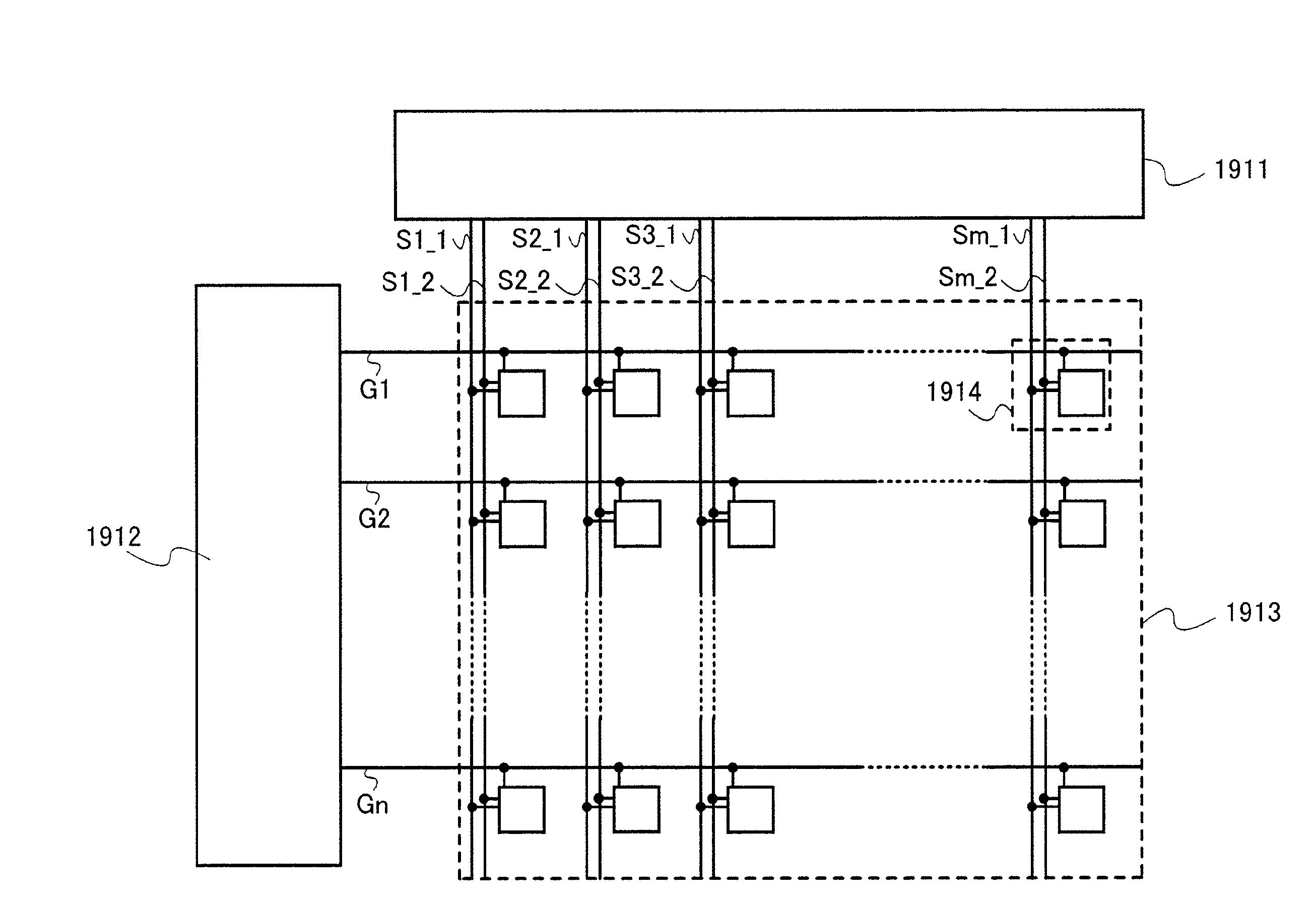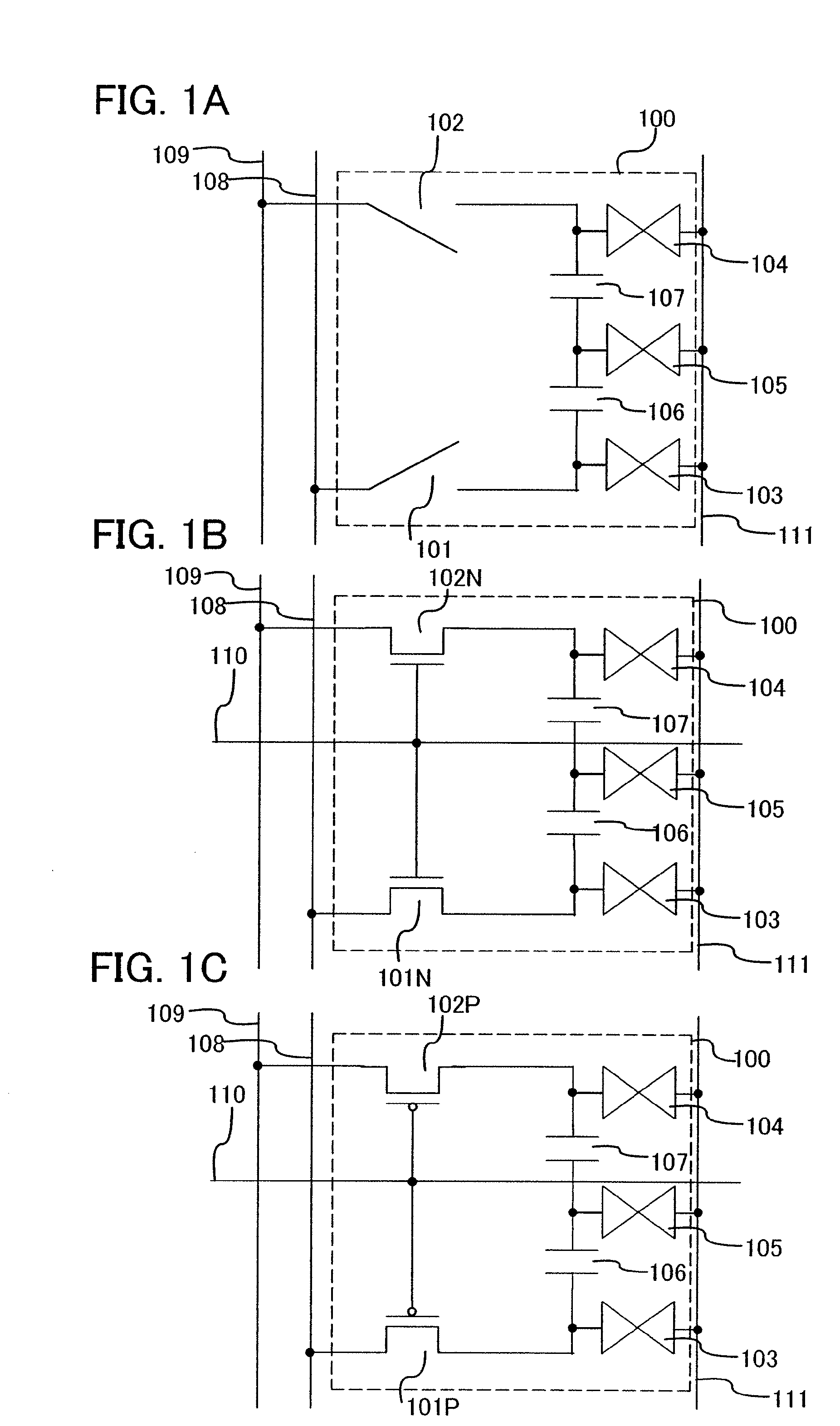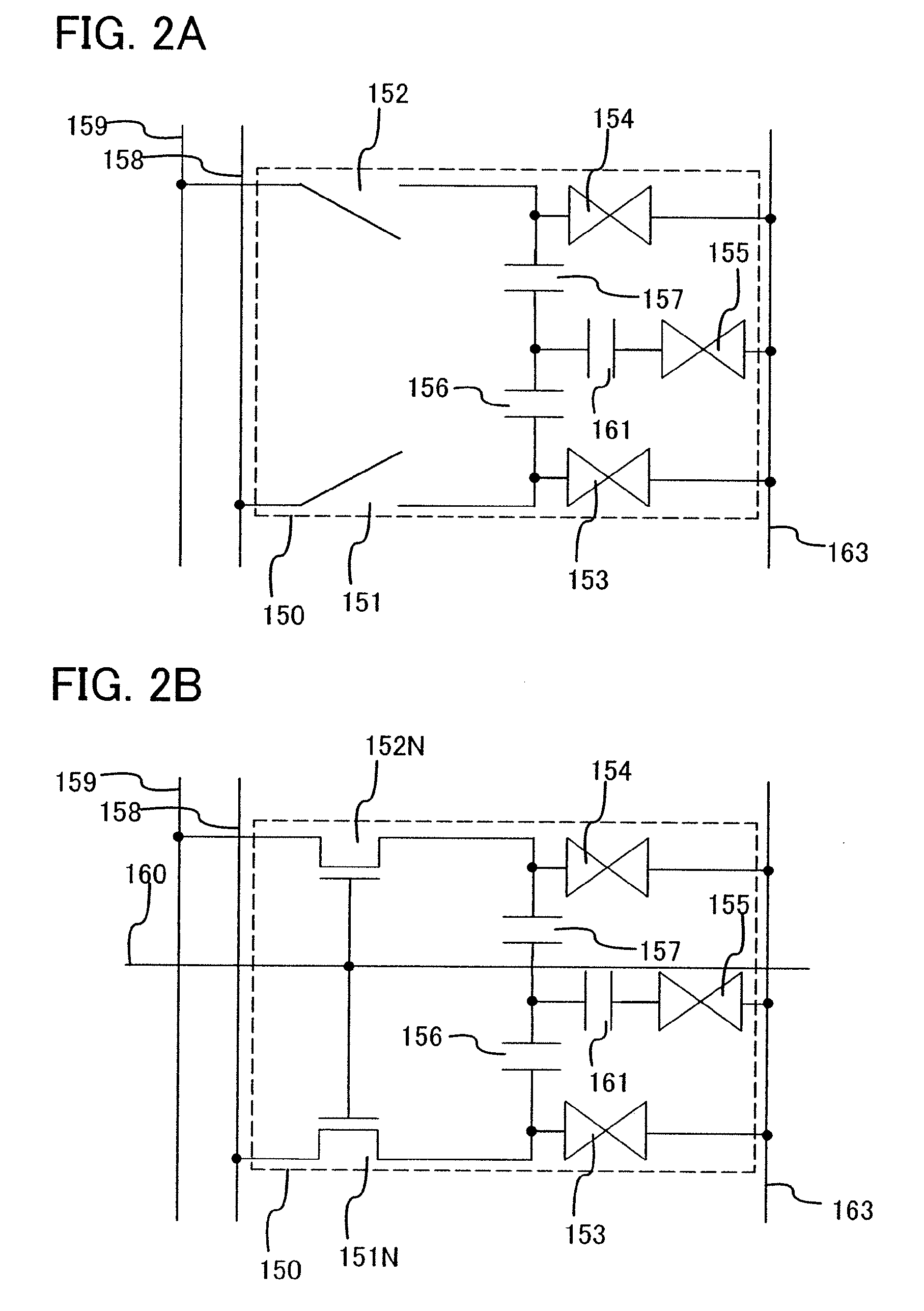Liquid crystal display device
- Summary
- Abstract
- Description
- Claims
- Application Information
AI Technical Summary
Benefits of technology
Problems solved by technology
Method used
Image
Examples
embodiment mode 1
(Embodiment Mode 1)
[0225]In this embodiment mode, structures and operations of a pixel circuit included in a liquid crystal display device of the present invention are described with reference to the drawings. The pixel circuit of the liquid crystal display device of the present invention has a structure in which one pixel is provided with a plurality of liquid crystal elements and voltage which is applied is varied between the liquid crystal elements. Specifically, one of or both a capacitor and a resistor connected to a liquid crystal element are provided to vary voltage applied to the liquid crystal element.
[0226]Note that a display element is not limited to a liquid crystal element, and various display elements (e.g., a light-emitting element (an EL element (e.g., an EL element including organic and inorganic materials, an organic EL element, or an inorganic EL element) or an electron emitter), an electrophoresis element, and the like) can be used.
[0227]There are various operati...
embodiment mode 2
(Embodiment Mode 2)
[0380]In Embodiment Mode 1, new voltage is produced by voltage division by using a capacitor and is supplied to a liquid crystal element. Note that an element for producing new voltage is not limited to a capacitor. Various elements such as a divider element, an element which converts current into voltage, a non-linear element, an element having a resistance component, an element having a capacitance component, an inductor, a diode, a transistor, a resistor, and a switch can be used. In addition, when these elements are connected in series or in parallel in combination, a desired circuit can be realized. Such an element is referred to as a divider element.
[0381]FIGS. 23A and 23B show the case where the capacitors in FIGS. 1A to 1C are generalized as divider elements. Therefore, the contents described in Embodiment Mode 1 can also be applied to FIGS. 23A and 23B.
[0382]FIG. 23A shows an example of a structure of a pixel circuit included in a liquid crystal display d...
embodiment mode 3
(Embodiment Mode 3)
[0502]In this embodiment mode, a structure and a manufacturing method of a transistor are described.
[0503]FIGS. 51A to 51G are cross-sectional views showing examples of a structure and a manufacturing method of a transistor. FIG. 51A is a cross-sectional view showing a structural example of the transistor. FIGS. 51B to 51G are cross-sectional views showing an example of a manufacturing method of the transistor.
[0504]Note that the structure and the manufacturing method of the transistor are not limited to those shown in FIGS. 51A to 51G, and various structures and manufacturing methods can be used.
[0505]First, structural examples of transistors are described with reference to FIG. 51A. FIG. 51A is a cross-sectional view of a plurality of transistors each having a different structure. Here, in FIG. 51A, the plurality of transistors each having a different structure are arranged, which is for describing the structures of the transistors. Accordingly, it is not necess...
PUM
 Login to View More
Login to View More Abstract
Description
Claims
Application Information
 Login to View More
Login to View More - R&D
- Intellectual Property
- Life Sciences
- Materials
- Tech Scout
- Unparalleled Data Quality
- Higher Quality Content
- 60% Fewer Hallucinations
Browse by: Latest US Patents, China's latest patents, Technical Efficacy Thesaurus, Application Domain, Technology Topic, Popular Technical Reports.
© 2025 PatSnap. All rights reserved.Legal|Privacy policy|Modern Slavery Act Transparency Statement|Sitemap|About US| Contact US: help@patsnap.com



